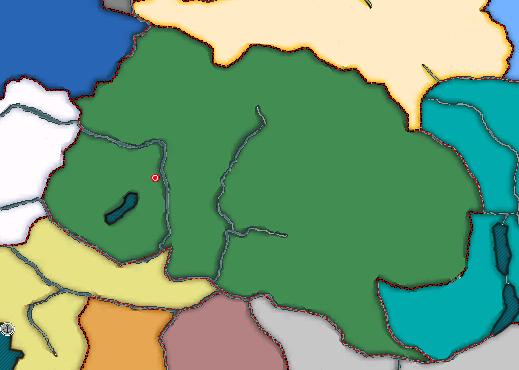Hungary
From Kaiserreich
| ||||
| Motto Cum Deo pro Patria et Libertate (With the help of God for Homeland and Freedom) | ||||
| Anthem Himnusz | ||||

| ||||
| Official Languages | Hungarian | |||
| Capital | Budapest | |||
| Head of State | Otto II, King of Hungary | |||
| Head of Government | K. Darányi de Pusztaszentgyörgyi | |||
| Establishment - Foundation of Hungary | 896 | |||
| - Recognized as Kingdom | December 1000 | |||
| - 1867 Augsleich | May 29, 1867 | |||
| Government | Parliamentary monarchy, full constituent state of Austria-Hungary | |||
| Currency | Austro-Hungarian krone | |||
| Area | Approx 200 000 km² | |||
| Population | About 16 millions | |||
Hungary is a primary constituent of the Austro-Hungarian dual monarchy. It borders Romania to the east and Bulgaria and Serbia to the south. Within the dual monarchy, the areas of Austria, Bohemia, Galicia-Lodomiera and Croatia also border Hungary.
Contents |
History
Before 1914 the Kingdom of Hungary regarded itself as a Great Power in its own right, as it constituted one half of the powerful Habsburg Dual-Monarchy. Victory in the Weltkrieg bought the Kingdom territorial gains at the expense of Serbia and Romania, but not the dominant position in the East that the Hungarians expected. While its agrarian economy has not fared well in the face of cheap grain from the new Eastern Kingdoms (particularly Ukraine), the political troubles in Austria and the weak Imperial authority under the adolescent Emperor Otto has allowed the Magyars to follow a more independent line.
A Hungarian national army has been formed, and a new strain of aggressive and expansionist nationalism, determined to ‘Magyarise’ the divided peoples of the Balkans, has come to the fore of Hungarian politics. While German meddling in 1927 prevented the Hungarians from cementing their dominant position in the Dual Monarchy, the next Ausgleich renegotiation should be the time when the whole of the Crown Lands of St. Stephen will finally be restored to the Magyar nation.
Politics
King of Hungary: His Royal Highness Otto II
Minister-President and Minister of the Interior: K. Darányi de Pusztaszentgyörgyi
Minister for Foreign Affairs: Endre Bajcsy-Zsilinszky
Minister for Finance: Lajos Reményi-Schneller
Director of Military Intelligence: Gyula Gömbös de Jakfa
Chief of General Staff of the Hungarian Army: Karoly Barthá von Dálnokfalva
Commander-in-Chief of the Hungarian Landwehr: Béla Miklós de Dalnók
Commander-in-Chief of the Hungarian branch of the Kaiserliche und Königliche Kriegsmarine: Miklós Horthy de Nagybánya
Commander-in-Chief of the Hungarian branch of the Kaiserliche und Königliche Luftfahrtruppen: Kálmán Ternegg-Ratz
Military
Army
The transleithaian part of the Austro-Hungarian Army is called Honvédség, and referred to as Royal Hungarian (German: "königlich ungarisch"; Hungarian: "Magyar Királyi"). The Honvédség became a specifically Hungarian Army within the Austro-Hungarian Empire. The term Honvédség is the name of the Hungarian military since 1848 referring to its purpose ("Hon" meaning "homeland" and "véd" meaning "defender" or "defence" thence "Honvéd" meaning "Homeland Defence").
The Hungarian Honvédség gradually increased its size since the end of the Weltkrieg and now consist of eight well-trained divisions of infantry. An even greater expansion of the army is expected in the following years.
Navy and Air Force
The Navy and the Air Force of Austria-Hungary lie on the shoulders of Austria. Hungary only has a small squadron of interceptors.
Foreign relations
Very good relations with Austria, Croatia, Galicia-Lodomiera and Germany.
Friendly relations with Bohemia, Bosnia and the Ottoman Empire.
Unfriendly relations with Ukraine, Poland, Serbia and Romania.


